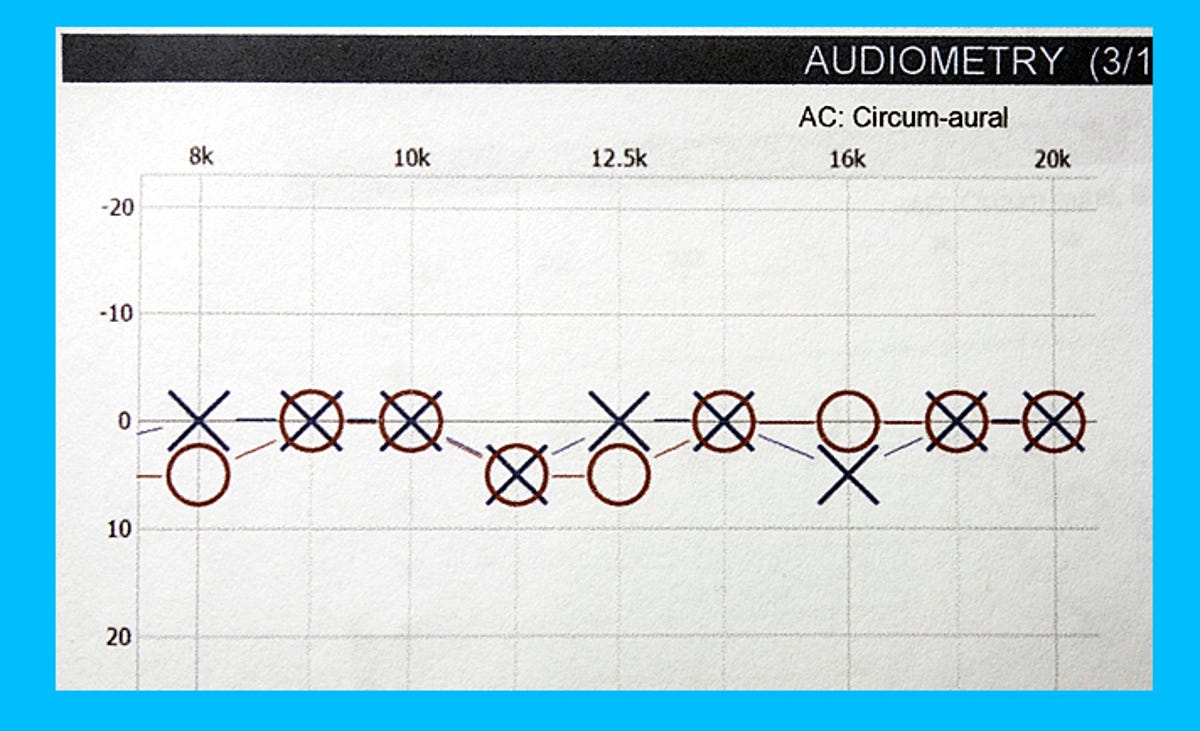
Dr. Julie Glick
I recently visited audiologist Dr. Julie Glick’s Manhattan office to get the low-down on how hearing tests work. Dr. Glick has 18 years of experience working with musicians, music industry professionals, audiophiles and anyone who wants to have their hearing checked.
She, like your local audiologist, will first go over your “aural” history and ask about ear infections, ringing in the ears and any other issues you might be having with your ears.
Next, the audiologist will perform a middle-ear tympanometry test to check the mobility of your eardrums and see how they react to changes in air pressure that occur when you fly or when you’re in a fast-moving elevator in a really tall building. With this test, the audiologist can determine if you have fluid behind your eardrums; they can also see if the three little bones in your ear are moving too much or too little. To get started, the doctor holds a small probe lightly against the ear to create a seal and then runs the test, which consists of a series of beeps, during which you’ll feel a small amount of pressure on your eardrums.
A standard hearing test (audiogram) covers the frequency range between 250 to 8,000 hertz (Hz), but because Dr. Glick works with so many musicians and sound engineers, she also has specialized equipment to perform an extended range test from 250 to 20,000Hz. For both of these tests, the patient sits in a soundproof booth, where they don a set of specially calibrated headphones and listen to a series of very quiet beeps. Next, the audiologist will read a series of words over the headphones, and the patient repeats the words.


Dr. Julie Glick
After the tests are completed, the audiologist will interpret the audiogram and discuss the results with the patient. They might see a “noise-induced notch” (hearing loss) in the audiogram that’s the result of long-term exposure to loud sound at work, sports events, and so forth. If caught early, and if the patient takes precautions and wears protection, they can halt or reduce further hearing loss. Beyond just testing hearing acuity, the tests can also reveal brain tumors, whether the inner ears bones are calcified, Meniere’s disease, tinnitus, dizziness and so on.
Dr. Glick wouldn’t show me any of her patient’s audiograms, but she sees a lot of folks in their early 20s whose high-frequency hearing extends to the upper limit of human hearing, 20,000Hz. She created the audiogram pictured at the top of this blog to illustrate a young person’s hearing tests, and another audiogram of someone with significant loss, whose hearing has been affected by loud noise. Other types of hearing losses attributed to middle ear problems can sometimes be corrected with surgery. So if you’re having problems understanding speech, see an audiologist; they might be able to help you.
If you ever experience a sudden hearing loss, see an otologist or ENT doctor immediately! The hearing loss might be reversible — don’t wait a few days to see if it clears up! Dr. Glick also recommends yearly hearing checkups.
Of course, the best general advice is never play music really loud for hours at a time over headphones or speakers, and wear earplugs in noisy environments. It’s a smart thing to do at any age, even if you’re a teenager who would still like to have great hearing in your 40s, 50s, and beyond.




